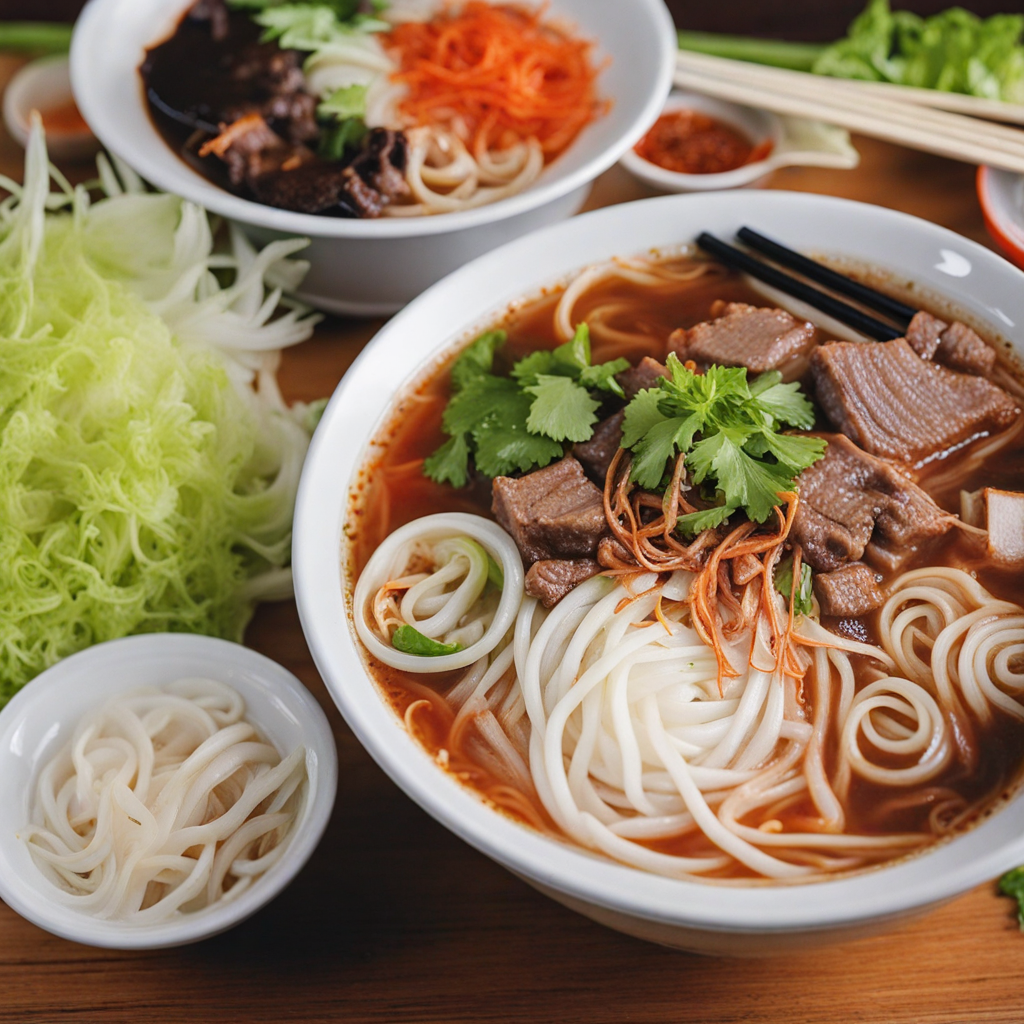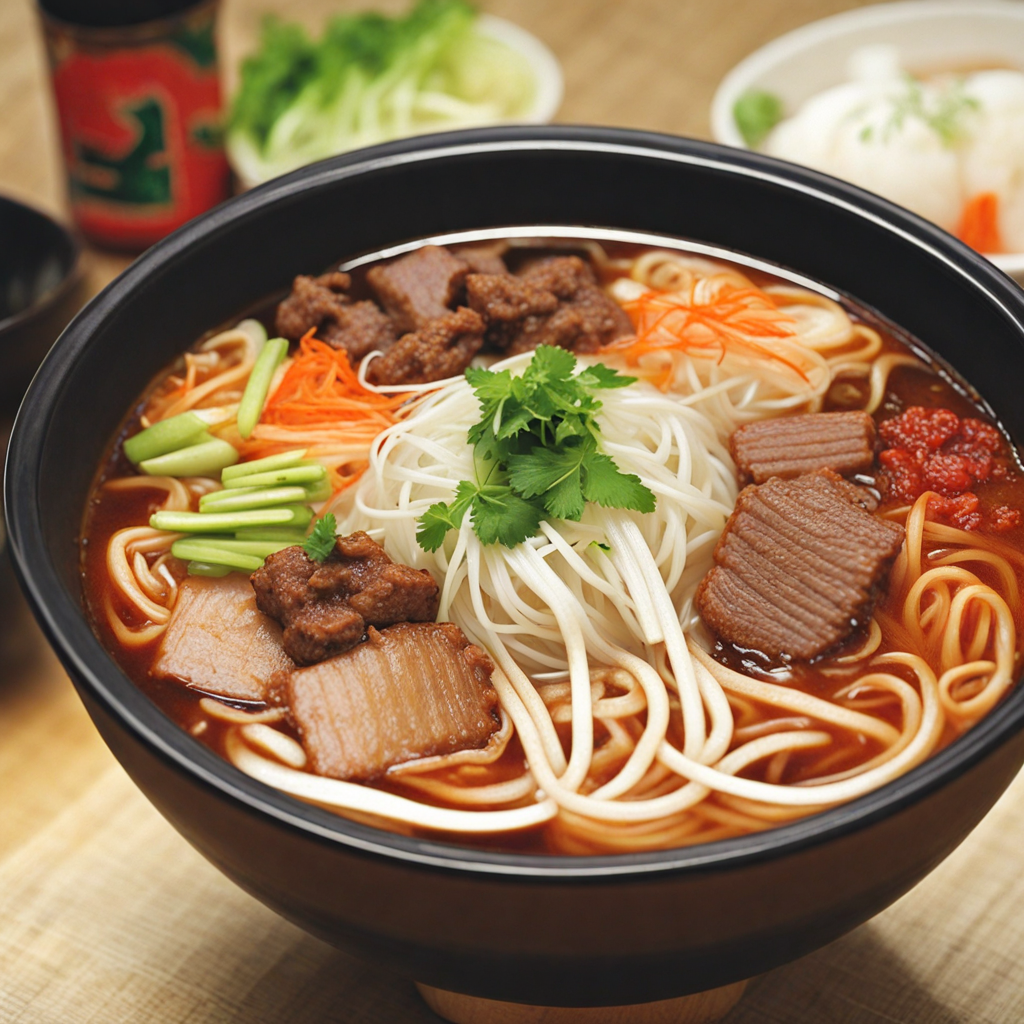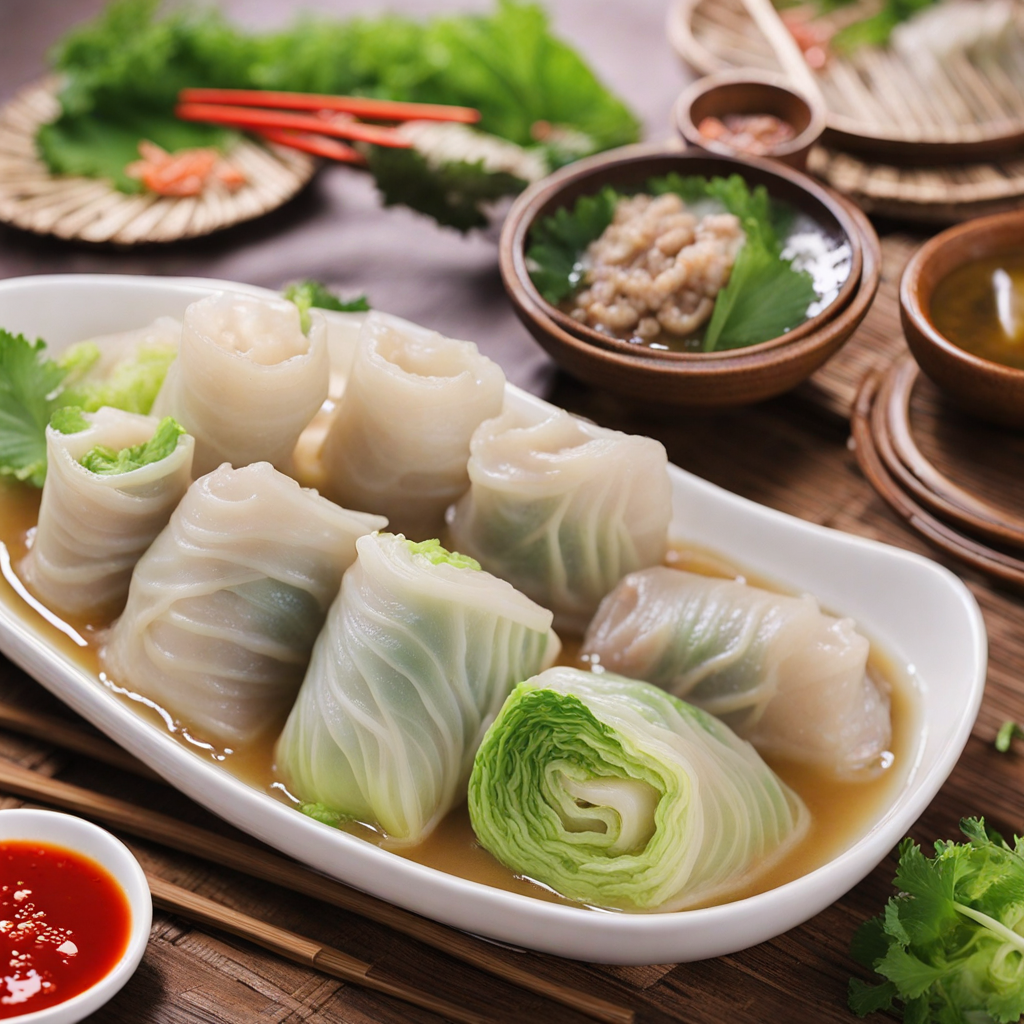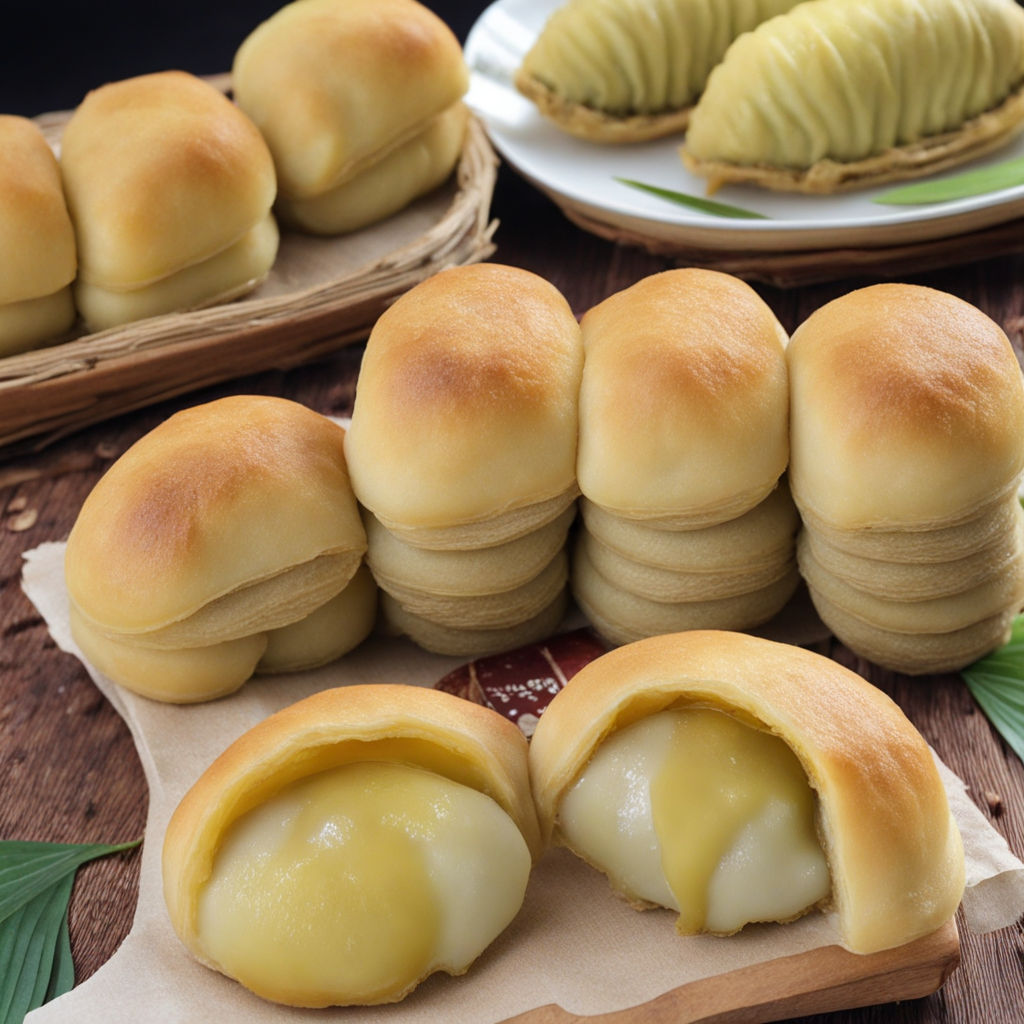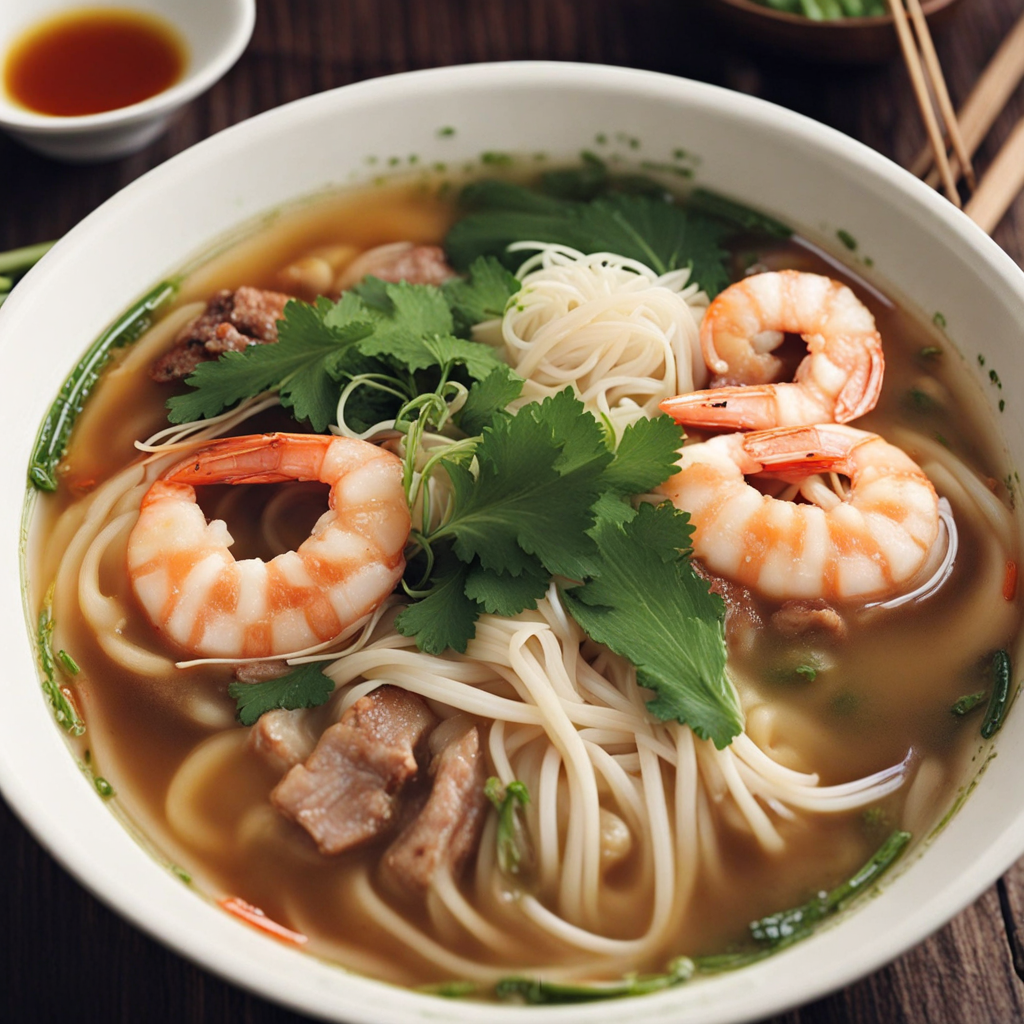Bun Bo Hue
Bun Bo Hue is a vibrant and aromatic Vietnamese noodle soup that hails from the ancient city of Hue, known for its rich culinary heritage. This dish features thick rice noodles that are tender yet chewy, served in a flavorful broth that is both spicy and savory. The broth is typically made from beef bones, simmered for hours to extract maximum flavor, and is infused with lemongrass, chili oil, and a unique blend of spices, creating a fragrant and enticing experience for the senses. The bright red hue of the broth is a visual cue to the heat that awaits, inviting adventurous eaters to dive in. In addition to the delectable noodles, Bun Bo Hue often includes a variety of toppings that enhance its texture and flavor. Tender slices of beef shank, brisket, and sometimes even pork are commonly added, along with fresh herbs like cilantro and mint, which provide a refreshing contrast to the rich broth. The dish is often garnished with bean sprouts, lime wedges, and thinly sliced chili peppers, allowing diners to customize the level of heat and acidity to their liking. Each bite is a delightful combination of flavors, textures, and temperatures, making it a hearty and satisfying meal. Bun Bo Hue is not just a dish; it's an experience that embodies the essence of Vietnamese cuisine. The interplay of spicy, sour, and savory notes captures the complexity of flavors that characterize the region's food. Served hot and enjoyed with friends and family, Bun Bo Hue is a celebration of community and culture, inviting everyone to gather around the table. For those seeking a new culinary adventure, this iconic dish promises to deliver an unforgettable taste of Vietnam's culinary landscape.
How It Became This Dish
Bún Bò Huế: A Culinary Journey Through Vietnam’s Heart Origins of Bún Bò Huế Bún Bò Huế, a fragrant and spicy noodle soup, hails from the ancient imperial city of Huế in central Vietnam. Its origins can be traced back to the 17th century, a period marked by significant cultural exchange and culinary experimentation. The dish is believed to have emerged from the culinary traditions of the Nguyen Dynasty, which ruled Vietnam from 1802 to 1945. This was a time when the royal court flourished, and the city became a melting pot of flavors, techniques, and ingredients. While the precise origins of Bún Bò Huế are somewhat murky, it is widely accepted that the dish was influenced by both local and regional cuisines. The use of rice noodles, or "bún," reflects the staple food of the Vietnamese people, while the beef component ("bò") speaks to the agricultural practices of the region. The inclusion of lemongrass, shrimp paste, and chili showcases the harmonious blend of flavors that characterize Vietnamese cuisine. Cultural Significance Bún Bò Huế is not just a meal; it embodies the spirit and history of Huế and, by extension, Vietnam itself. The dish is often associated with family gatherings, special occasions, and communal eating, making it a vital part of Vietnamese culture. Traditionally, it is served in a large bowl, allowing diners to share and enjoy the experience together. The act of eating Bún Bò Huế transcends nourishment; it is a ritual that fosters connection among family and friends. The dish also holds a special place in the culinary hierarchy of Vietnam. While pho, another famous Vietnamese noodle soup, has gained international recognition, Bún Bò Huế remains a beloved local favorite, particularly in central Vietnam. It reflects the regional identity of Huế, a city known for its historical significance and rich cultural heritage. The dish is often seen as a symbol of Huế’s royal past, encapsulating the complexity and intricacy of flavors that define the region's cuisine. Ingredients and Preparation At the heart of Bún Bò Huế is the broth, which is a labor of love. The broth is typically made from simmering beef bones and various cuts of beef, such as shank or brisket, for several hours. This long cooking process extracts the flavors and richness of the meat, creating a deep, savory base. Lemongrass is a key ingredient that imparts a citrusy aroma, while shrimp paste adds umami depth, balancing the dish with its salty profile. The noodles used in Bún Bò Huế are round rice vermicelli, which are slightly thicker than those used in pho. The noodles are blanched and then served in a bowl topped with the tender beef, herbs, and fresh vegetables. Common garnishes include cilantro, green onions, and sliced chili, providing a fresh contrast to the rich broth. A distinctive feature of Bún Bò Huế is its spicy kick, which comes from the addition of chili oil or fresh chilies. This heat is tempered by a variety of fresh herbs, including mint and basil, which add brightness to the dish. The interplay of flavors and textures creates a satisfying culinary experience that is both invigorating and comforting. Evolution Over Time As Vietnam underwent significant historical changes throughout the 20th century, so too did Bún Bò Huế. The Vietnam War (1955-1975) brought about significant upheaval, leading to the migration of many Vietnamese people, including those from Huế. As refugees settled in various parts of the world, they brought their culinary traditions with them, introducing Bún Bò Huế to a global audience. In the post-war era, particularly during the 1980s and 1990s, Vietnam opened its doors to international trade and tourism. This period marked a renaissance in Vietnamese cuisine, with dishes like Bún Bò Huế gaining recognition beyond its regional roots. Restaurants specializing in Huế cuisine began to emerge in major cities like Ho Chi Minh City and Hanoi, as well as in Vietnamese communities abroad, particularly in the United States, Australia, and Europe. Contemporary chefs have also experimented with traditional recipes, infusing new life into Bún Bò Huế. While the core ingredients remain unchanged, variations have emerged to cater to diverse palates. For instance, some modern interpretations may offer a vegetarian version, replacing beef with tofu or mushrooms, while still capturing the essence of the original dish. Furthermore, social media has played a pivotal role in the global appreciation of Bún Bò Huế. Food bloggers, influencers, and chefs have shared their takes on the dish, showcasing its vibrant colors and rich textures. The imagery associated with Bún Bò Huế has helped to elevate its status, making it a sought-after dish for food enthusiasts around the world. Modern-Day Bún Bò Huế Today, Bún Bò Huế enjoys widespread popularity both in Vietnam and internationally. It is often featured on menus in Vietnamese restaurants and is celebrated for its rich flavors and aromatic qualities. Festivals and food fairs showcase the dish, allowing chefs to highlight the traditional techniques that go into making authentic Bún Bò Huế. In Huế itself, the dish remains a staple of local cuisine. Street vendors and small eateries continue to serve up steaming bowls of Bún Bò Huế, each with its own unique twist. Locals often have their favorite spots, where they believe the broth is the most flavorful, and the noodles are the perfect texture. The dish is a point of pride for the people of Huế and serves as a reminder of their culinary heritage. Conclusion Bún Bò Huế is more than just a noodle soup; it is a reflection of Vietnam’s history, culture, and culinary artistry. From its humble beginnings in the royal city of Huế to its status as a beloved dish enjoyed around the world, Bún Bò Huế encapsulates the rich tapestry of flavors and traditions that define Vietnamese cuisine. Each bowl tells a story, inviting diners to partake in a shared experience that transcends borders and generations. As the world continues to discover the wonders of Vietnamese food, Bún Bò Huế stands as a testament to the enduring spirit of a nation and its culinary legacy.
You may like
Discover local flavors from Vietnam


